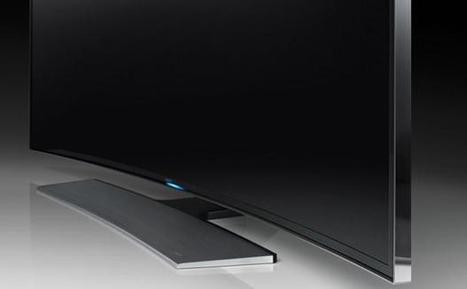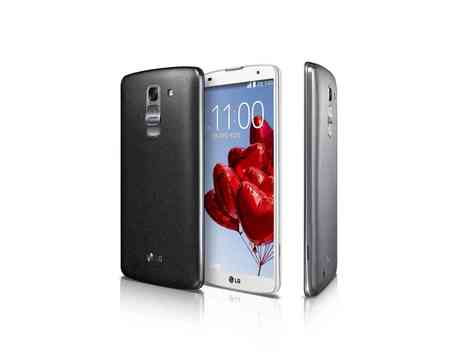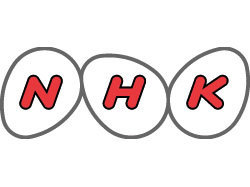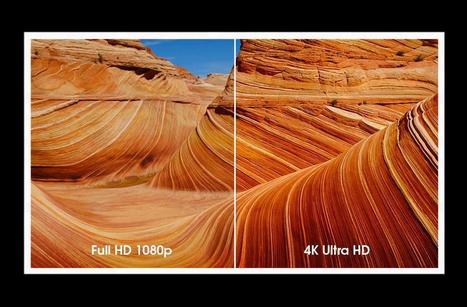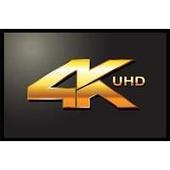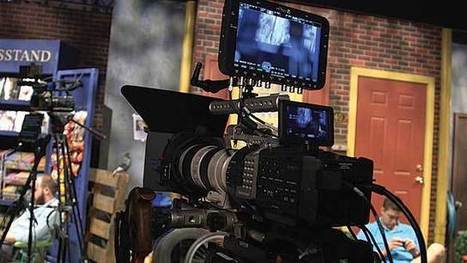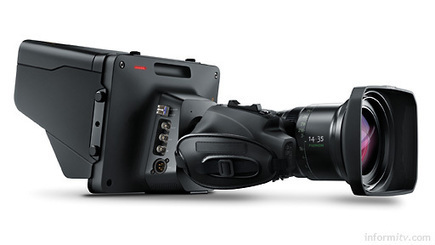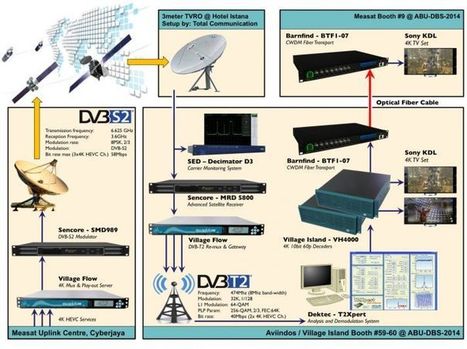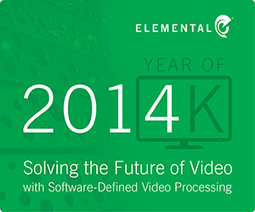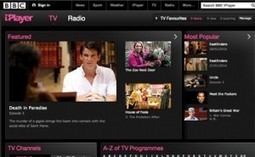 Your new post is loading...
 Your new post is loading...
The Broadband Forum, the leading global association of broadband service providers and technology vendors announced support for the new ITU-T ultra broadband access standard, G.fast, as a new way to deliver bandwidth intensive consumer applications such as 4K Ultra High-Definition TV (4K UHD) and cloud-based consumer applications. “Consumers should have confidence that the leading broadband service providers globally are working hard to deliver 1Gbps, ultra broadband access,” said Robin Mersh, CEO of Broadband Forum. “The new G.fast standard makes it possible for telcos to deploy 4K UHD services faster and more affordably than they could with Fiber to the Home (FTTH).” G.fast uses a novel mix of technology and architecture, which dramatically increases the performance of digital transmission over telephone wires. The new ITU-T standard (G.9701), approved last week, enables up to 1Gbps by using next-generation, high bandwidth communications technologies and by placing them closer to the home into the distribution point (where phone lines get bundled near the residence) – often within 300 meters from the customer premises.
A l’IBC en 2012 et 2013, la 4K était surtout présente dans l’amont de la chaîne de valeur, avec les caméras et systèmes de post-production de programmes de stocks. L’année dernière étaient apparus les premiers outils pour réaliser des programmes de flux (TV en direct) et avaient été menées les premières expériences de captation en live dont Roland Garros. Les premières expérimentations d’encodage et de diffusion satellite avaient démarré en 2012, mais sur des programmes de “stock”.
En 2014, c’était au tour d’un grand nombre d’acteurs côté réception et box de faire des démonstrations de solutions 4K. Roland Garros n’a plus seulement été capté en 4K mais également diffusé, et sur trois tuyaux (à titre expérimental) : en IP, en satellite et en TNT (DVB-T2 via la Tour Eiffel). Année paire oblige, la 4K a aussi été largement expérimentée aux JO de Sotchi ainsi que pendant la Coupe du Monde de Football au Brésil. Les professionnels fourbissent maintenant leurs armes pour être prêts pour la prochaine année paire, 2016 et notamment pour les Jeux Olympiques à Rio de Janeiro.
Les premiers projets 4K concrets commencent à voir le jour chez les opérateurs les plus innovateurs. Vodafone va ainsi lancer sa première offre de TV payante 4K début 2015 en Allemagne. Si les box à venir sur le marché français ne seront probablement pas encore 4K en 2014-2015 (chez Bouygues Telecom, Orange et Free), les générations suivantes sauteront sans doutes le pas. On attend toujours de voir qui sera le premier à dégainer ? Free ou Canal+ voire Orange ? C’est une question qui mêle : la capacité d’innovation, la volonté de différentiation des acteurs, le calendrier de livraison des chipsets 4K pour set-top-boxes et des considérations économiques évidentes. Les box prévues pour courant 2015 ont plus de chances d’être 4K que celles qui sont prévues pour 2014 voire début 2015.
How can publishers ensure that their viewers are getting a TV-like experience with MPEG-DASH video? At the recent Streaming Forum conference in London, experts from Qualcomm and Bitmovin explained the finer points of QoE for DASH. "How can the DASH standard or standardized formats have to increase the quality, once there is some kind of metrics or logging functionality at the client that gives you means to communicate to another instance -- a logging server or whatever -- what's going on in the client side?" asked Christian Timmerer, CIO for Bitmovin. "In DASH there is an Annex D which is a normative definition of semantics for these metrics according to different observation points. If you have the DASH access client -- that basically is the one that issues the HTTP request -- and gets the responses and hands that over to what we call here a DASH-enabled application, which then in the end feeds into a display for rendering purposes or whatever."
Via DASH Industry Forum
A significant step in the road to Ultra High Definition TV services has been taken with the approval of the DVB-UHDTV Phase 1 specification at the 77th meeting of the DVB Steering Board. The specification includes an HEVC Profile for DVB broadcasting services that draws, from the options available with HEVC, those that will match the requirements for delivery of UHDTV Phase 1 and other formats. The specification updates ETSI TS 101 154 (Specification for the use of Video and Audio Coding in Broadcasting Applications based on the MPEG-2 Transport Stream).
Another specification to gain approval from the Steering Board was the MPEG-DASH Profile for Transport of ISO BMFF Based DVB Services over IP Based Networks. This specification defines the delivery of TV content via HTTP adaptive streaming. MPEG-DASH covers a wide range of use cases and options. Transmission of audiovisual content is based on the ISOBMFF file specification. Video and audio codecs from the DVB toolbox that are technically appropriate with MPEG-DASH have been selected. Conditional Access is based on MPEG Common Encryption and delivery of subtitles will be XML based. The DVB Profile of MPEG-DASH reduces the number of options and also the complexity for implementers. The new specification will facilitate implementation and usage of MPEG-DASH in a DVB environment.
Via DASH Industry Forum
Building on a research trial during the World Cup, the BBC will use the Commonwealth Games in Glasgow to trial what it calls the world's first live Ultra HD production and transmission entirely in IP.
The BBC prides itself on pioneering media technology, and its renowned research and development team has come up trumps again with what it claims is a world first live UHD production produced and transmitted in an entirely IP domain.
The trial is planned to take place during the Commonwealth Games, a quadrennial international multi-sport event hosted in Glasgow for two weeks from July 23.
It extends the BBC's trial of UHD live feeds from the World Cup in Brazil delivered simultaneously over conventional digital terrestrial and IP networks. The first of three matches delivered in the format for these tests airs on June 28.
From Glasgow, Scotland the BBC intends to replicate the Brazil trial by sending UHD signals across DTT and IP networks in partnership with telco BT and infrastructure provider Arqiva with the feed compressed in HEVC. This will again test the quality of service to a home environment.
One of the world’s most famous performance institutions, the Vienna State Opera (VSO), is to stream what is claimed to be the world’s first live production in 4K video coding (HEVC). Delivered via MPEG-DASH over the Internet for global viewing on Samsung Smart TVs and on special public display in the opera house, the broadcast is set for 7pm CET on 7 May with a production of Verdi’s Nabucco starring Plácido Domingo in the title role will. It will be streamed for global viewing on UltraHD smart TVs as well as to a 65" Samsung UltraHD TV at the opera house.
Via DASH Industry Forum
At booth SU1210 at the 2014 NAB Show, Harmonic will demonstrate the world’s first end-to-end HEVC solution for delivering live 2160p60 10-bit Ultra HD content. In collaboration with companies including Broadcom Corporation, Sigma Designs, Vigor Systems, and ViXS, the Harmonic broadcast workflow supports the delivery of live, linear playout and VOD Ultra HD content to consumer-grade TVs and set-top boxes (STBs).
Highlights include: - The first consumer-grade demonstration showing live streaming of Ultra HD content, based on Harmonic’s market-leading HEVC encoding technology and the XCode 6400, a 2160p60 10-bit SoC chip from ViXS Systems, used to decode and display live content to a UHDTV via HDMI 2.0.
- An end-to-end solution for delivering 2160p60 Ultra HD VOD content over IP networks featuring Harmonic’s ProMedia® Xpress high-performance transcoder with HEVC support, sent by the WFS™ file-based workflow engine to a MediaGrid shared storage system, and streamed using the ProMedia Origin stream packager and server to consumer devices in the MPEG-DASH format.
- A 2160p60 Ultra HD linear playout workflow featuring Harmonic’s WFS, ProMedia Xpress, and MediaGrid solutions integrated with an Advertio transport stream playout platform from Vigor Systems, to deliver an Ultra HD linear channel.
- An Ultra HD 120-Hz broadcast workflow powered by Harmonic ProMedia Xpress frame-rate upconverted on Sigma Designs’ high-performance and cost-effective 120-Hz Ultra HD TV platform. Sigma Design’s Ultra HD TV platform is comprised of an Ultra HD TV SoC that enables HEVC decoding (STV7603) and an innovative motion judder removal and frame-rate conversion SoC (FRC8000) for providing the best picture quality on large screen displays.
- The first standard-compliant live 4K Ultra HD broadcast workflow, powered by Harmonic ProMedia Xpress transcoding and decoded by Broadcom’s BCM7445 Ultra HD video decoder solution.
NanoTech Entertainment announced today that it has partnered with Ittiam Systems Ltd. to provide NanoTech's Nuvola NP-1 and NP-C consumer and commercial 4K Ultra HD streaming media players with HEVC (H.265) and VP9 support. NanoTech will join Ittiam in providing demonstrations of the newly enhanced players at Ittiam's NAB 2014 Booth SU11021 (Upper South Hall).
The demonstrations will show how Ittiam's Tegra-4 optimized 4K HEVC decoder running on Nuvola can effectively enable anyone with a 3 Mbps or greater pipe to stream 4K content to their Ultra HD TV. NanoTech's own 4K OTT Video Service, UltraFlix, along with the likes of Amazon, Netflix, YouTube and M-GO will all be able to stream amazing quality content to Nuvola customers at lower bit-rates than ever before.
While online video providers will be able to pioneer 4K viewing for the public using bit rates as low as 10Mbps (for movies over broadband), the introduction of true Ultra High Definition (UHD) television on broadcast networks will start at around 15Mbps, while we could see bit rates as high as 30Mbps initially, using the best current available HEVC/H.265 compression.
Although consumer marketing is confusing the two, there is a big difference between 4K television, which delivers four times the pixels of HDTV, and what is being talked about as true UHD, which quadruples the pixel count but also supports at least 50/60 frames per second and at least 10 bit colour depth.
As I begin my journey to this year’s Mobile World Congress in Barcelona, I am thinking through the major trends and inflections that will most impact mobile technology and usage models going forward. One of those I wrote about last week was quick charging. What I would like to talk about now is 4K capabilities on mobile devices and how mobile could be the primary driver for 4K. Let me start with explaining what 4K is and how it applies to mobile devices. I also wanted to touch on some interesting things Qualcomm is doing in this arena.
Adobe, NBCU, Elemental, Deltatre, LiveU, and more are readying streaming platforms that will deliver coverage to desktops and mobile devices around the globe.
Four years ago according to the IOC there was a defining moment in Olympic broadcasting history. Vancouver was the first Winter Games to be fully embraced on digital media platforms where digital coverage accounted for around half of the overall broadcast output.
Globally, on official rights-holding broadcasters’ internet and mobile platforms, there were more than 265 million video views and in excess of 1.2 billion page views during the games. There were also approximately 6,000 hours of 2010 coverage on mobile phone platforms.
Digital coverage from Sochi will surpass this, with many more broadcasters drawing on the clear consumer demand from London 2012 for any time, any device viewing.
The IOC places such draconian restraints on rights holders and anyone working for them to report involvement in the Olympics, which extends to technology contractors, that it's tricky to unearth details on this story. With that caveat, here are some of the large-scale video streaming activities set to go live from Sochi at the end of this week.
While the rest of the world is wondering about when we will see 4K broadcasts, NHK in Japan is conducting test transmissions of 8K Super Hi-Vision signals over the air. Its latest test demonstrated a signal with 16 times the resolution of high-definition sent over a single terrestrial television channel.
The standards for Ultra-High-Definition or UHDTV include both 8K and 4K profiles. An 8K Super Hi-Vision image has a resolution of 7680×4320 pixels, or over 33 megapixels, which is four times the resolution of a 4K or 3840×2160 image, or 16 times the resolution of a full-frame high-definition picture.
In its latest test, at the research laboratories of NHK in Hitoyoshi in southern Japan, an 8K signal was transmitted over a standard 6MHz broadcast channel and received 27 kilometres away.
Ultra HD is not another 3DTV, set to grab the headlines and then fade away, but is the next big consumer-facing development in television and one that will prompt a new arms race in the Pay TV industry and new infrastructure investments. That was the conclusion from a Videonet webcast last week that looked at what we learned from International CES 2014. On a panel featuring experts from Strategy Analytics, MTM London and Genovation Capital, it was argued that the early efforts of OTT service providers like Netflix to get UHD content in front of consumers will not give them any long-term advantage over the Pay TV industry.
|
La 4 K (ou Ultra H-D), aujourd'hui, en résumé : - Effet waouh incontestable ! Cette fois, c'est l'Asie qui mène la danse ! Chine en tête
- Les fabricants d'écrans sont prêts. Hollywood, les grandes plates-formes de vidéo en ligne, et le public, aussi !
- Mais les TV, échaudées par la 3D, restent prudentes
Sony a profité de l'édition 2014 du MIPCom cette semaine à Cannes pour faire le point, lors d'un cycle de conférences et de projections, d'une année riche en productions Ultra HD expérimentales sur tous les continents.
The Society of Motion Picture and Television Engineers (SMPTE) on September 10 is to release a technical standard covering High Dynamic Range (HDR) images that will – in essence – match the Dolby Vision proposals from Dolby Labs.
The concept could allow viewers to see what has been described as “dazzling” in its treatment of whiter whites and permitting much more variation in representing blacks/grays and items in shadow. One commentator, The Hollywood Reporter’s Carolyn Giardina, says early demonstrations have shown that the difference is a “more noticeable upgrade compared to moving from HDTV to Ultra-HD”.
The September 10 meeting at IBC will see SMPTE publish its ‘transfer function’ document which outlines a roadmap for the technology, starting at the camera’s lens and on to colour grading and post-production and eventual delivery to broadcasters and the home.
The industry might be buzzing about 4K video, but is this something consumers actually want? At the recent Streaming Media East conference in New York City, Will Law, chief architect, media division, at Akamai, reminded the audience that this discussion sounds awfully familiar.
"I'm a pragmatic optimist about 4K, and I'm also a student of history," Law began. "I wanted almost to print out a session we had at Streaming Media East about six years ago that was taking about the new format coming out -- how it was larger, there were no screens to display it, there were no devices to play it, content wasn't produced in it. And that format was 1080p. Six years ago we were having exactly the same discussion, and I think we're going to repeat it again. In six years time we're going to be looking back and we will see a transition from 720 to 1080 to 4K."
It wasn't long ago that 3D enjoyed the same level of hype. Yet, it still didn't catch on.
The Consumer Electronics Association has announced updated core characteristics for ultra high-definition TVs, monitors and projectors for the home. As devised and approved by CEA’s Video Division Board, these characteristics build on the first-generation UHD characteristics released by CEA in October 2012.
Under CEA’s expanded characteristics, a TV, monitor or projector may be referred to as Ultra High-Definition if it meets the following minimum performance attributes: — Display Resolution – Has at least eight million active pixels, with at least 3,840 horizontally and at least 2,160 vertically. — Aspect Ratio – Has a width to height ratio of the display’s native resolution of 16:9 or wider. — Upconversion – Is capable of upscaling HD video and displaying it at ultra high-definition resolution. — Digital Input – Has one or more HDMI inputs supporting at least 3840x2160 native content resolution at 24p, 30p and 60p frames per second. At least one of the 3840x2160 HDMI inputs shall support HDCP revision 2.2 or equivalent content protection. — Colorimetry – Processes 2160p video inputs encoded according to ITU-R BT.709 color space and may support wider colorimetry standards. — Bit Depth – Has a minimum color bit depth of eight bits.
Since the NAB conference in April, 4K workflow options have swelled. Here's a look at the hardware, recording media, and codecs needed to produce and stream 4K video.
4K or ultra-high-definition was a dominant theme at the NAB Show in Las Vegas. Among the many product launches were 4K production cameras at attractive price points, promising to make ultra-high-definition affordable, offering at least four times the resolution of high-definition without a prohibitive price premium. So what are the implications for broadcasters?
Blackmagic Design introduced a studio camera for live Ultra HD production for just under $3,000, excluding lens. That is an extraordinarily affordable price for a studio camera, including a 10-inch high-definition monitor. The company has also upgraded its cost-effective production switchers to 4K. It brings 4K studio production into the most modest budgets.
PeerApp, Limelight Networks and EdgeCast Networks jointly formed the open Content Service Extension initiative last year to enable an open-standards environment through which broadband operators can work collaboratively with Internet content providers and web applications to deliver services in a manner that efficiently utilizes network infrastructure and maximizes subscriber Quality of Experience (QoE). The CSE architecture allows CDNs and content service providers to extend their business logic and delivery footprint deeply into operator networks, through invocation of network functions and capabilities deployed and controlled by the operator. It also establishes a mechanism through which operators can be fairly compensated for the role their infrastructure and network capabilities play in service delivery. In addition to participating in this demonstration, Sandvine will also be formally joining the Content Service Extension initiative.
The demonstration features managed delivery of 4K video content from Limelight's global CDN footprint into the home, triggering operator caching and network Quality of Service (QoS) extension services in a trusted and controlled fashion. The operator-side implementation of the CSE service architecture includes PeerApp's UltraBand cache and CSE controller platforms as well as Sandvine's Service Delivery Engine (SDE).
The demonstration will be streaming DivX HEVC UltraHD (4K) video to a 4K TV set. The MPPA-256 , KALRAY’s first MPPA® MANYCORE processor coming with 256 cores on a single chip, will be used for a demonstration at CCBN 2014, being held in Beijing, China (Mar 20-22). The MPPA-256 processor demonstrates a complete Ultra HD HEVC live encoding based on DivX HEVC UltraHD video.
Kalray’s demnonstrator uses the MainConcept HEVC SDK that is capable of encoding a high-quality Ultra HD HEVC video at 30 fps using four MPPA®-256 processors which consume less than 50 Watts altogether. The decoding and live display will be shown on a commercially available Ultra HD TV.
A live demonstration of a unique satellite and terrestrial hybrid 4K transmission system is in the works for the upcoming ABU DBS (Digital Broadcasting Symposium) 2014 Exhibition in Malaysia.
For the demonstration, Village Island and Aviindos developed with MEASAT the idea to empower the live transmission through a DVB-S2 transponder. This follows a request from the DVB group to demonstrate dual 4K services on a single DVB-T2 channel. The demonstration is also in response to generic deployment trends in South-East Asia to deploy digital TV concurrently via satellite and terrestrial means.
NTV Plus pioneered the initiative to broadcast the Sochi 2014 Winter Games in 4K. Following an extensive period of testing during 2013, NTV Plus designed and deployed an end-to-end 4K HEVC workflow that features Sony 4K cameras, Elemental Live video encoders, NTV Plus satellite uplink and signal receiving systems and Broadcom-enabled real-time decoders for playback on Panasonic 4K TVs. A single video stream encoded by Elemental enables NTV Plus to reduce the 100Mb of bandwidth which would otherwise have been required for delivery of 4K HEVC content.
The age of 4K may have officially begun, but the world still has some catching up to do. Case in point: You can't actually watch this weekend's Super Bowl in 4K (a.k.a. Ultra HD), even if you have a 4K TV, since there isn't yet a broadcast or cable standard for ultra-high-def format. Even the live stream is "just" in 720p.
That doesn't mean 4K won't make a difference at the big game. Fox will have six 4K cameras at MetLife Stadium — two on the sidelines, two on the goal lines and two on the end lines — specifically for the network's "Super Zoom" feature. When the broadcast needs to get in tight on some action, the feed will crop a 720p "window" from the 4K picture captured by those cameras. That way, Fox can get tight, high-res images without needing to zoom in optically.
Akamai has been providing a number of clues about how the company intends to dramatically increase the performance of the Internet for video streaming to support Ultra HD and ultimately match the scale and quality of broadcast TV. One big clue could be found on the Qualcomm stand at International CES 2014 when that company’s subsidiary, Qualcomm Atheros, was demonstrating its IPQ home gateway. Among other things this included a proof-of-concept client software from Akamai that is designed to optimize the delivery and pre-positioning of content like video and software.
The client software is not a product yet but Akamai is certainly talking as if it will be. Kris Alexander, Chief Strategist, Connected Devices & Gaming at Akamai, says, “The demo offers a glimpse into the future of the Akamai platform as we explore ways to move beyond the edge and onto devices of many types – not only gateways but game consoles, set-top-boxes, Blu-ray players, connected TVs and more.”
|



 Your new post is loading...
Your new post is loading...









